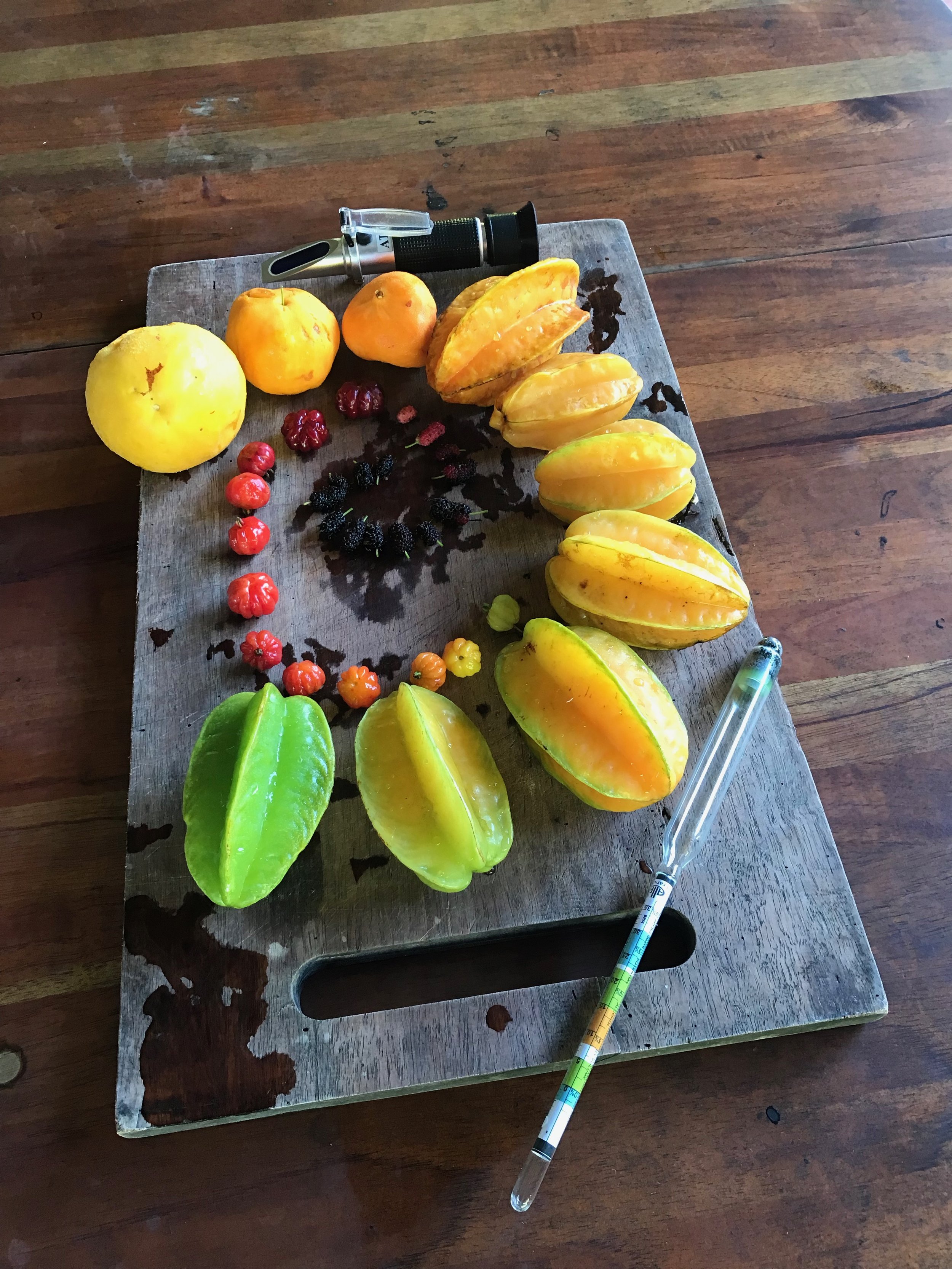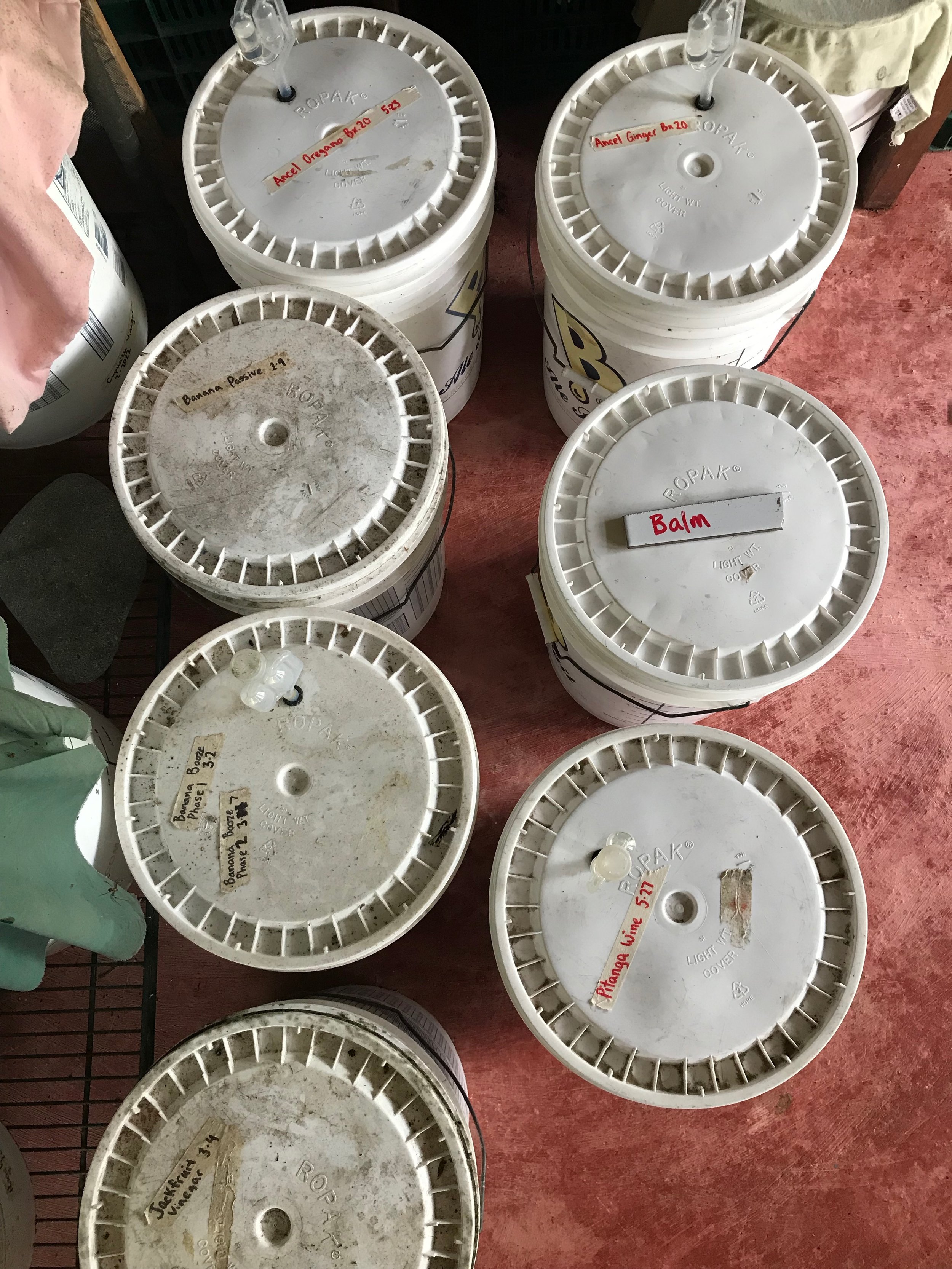Permaculture-Based Alcohol Production as an Energy Source — “The Proof is in your Buzz”
By 2022 apprentice Lucas Babinec
With a refractometer we determine the brix of various fruits
Bring to mind a world where energy is cheap, plentiful, AND environmentally friendly. What’s powering that world? Wind? Biogas? Hydroelectric? Solar?
Pause.
Take this question seriously.
Our current track record with energy has us in a planetary ecological crisis, not to mention indirectly causing inequity and oppression all over the world. Now, what if we could grow our own fuel, in a way that increases soil fertility, ecosystem health, biodiversity and without any pollution or additional extraction of our planet’s precious resources. In a decentralized, community supporting, and resilient system. Caring for each other (people), the earth, and sharing the abundance fairly. Crazy. Nonsense. Not possible.
Enter Permaculture-Based Alcohol Production as an energy source
Please, if you’re here reading this and are unfamiliar with permaculture, check out these essential blog posts: Why Permaculture and Applied Permaculture Principles. Also, *shameless plug warning* look into taking one of our yearly Permaculture Design Courses.
In my first blog article I reviewed a book, ‘The Wizard and the Prophet’, about two different mindsets when working through our ecological challenges as a species. Permaculture-based alcohol fuel production harmonizes both perspectives, bring the best tech magic from the wizard and the most essential wisdom from the prophet together. At this point you probably are asking the question:
How?
Simple. Regenerative agriculture. Fermentation. Distillation. And then cycling all yields back into the system, aided by stacking functions and honoring the principle of zero-waste. This can be done on a household level or on a community level. Both would work within the design framework of permaculture and both are probably needed to gain true energy sovereignty. Primary fuel crop and overall polyculture selection would be specific to each biosphere and personal/regional culture preference.
A productive banana grey water circle
For example, here in Mastatal that might look like a great diversity of fruit trees: Sapote, pitanga, starfruit, jackfruit, mango, papaya, and many others that offer both food and the chance to ferment whatever can’t be eaten. Then, you’d have your staple fuel crops such as bananas, cassava (yuca), bamboo, and sugar cane. These would all be supported by other plants that fix nutrients in the soil (making them more bio-available), attract pollinators, and provide biomass for mulching. With skillful agroforestry methods in place, such as those implemented at Rancho Mastatal, anyone or any community could grow their own fuel. In a temperate climate like North Carolina, the fruit trees might be pawpaws, apples, and mulberries, with staple crops like potatoes, corn, soy beans, and hemp (grown in a polyculture/plant guilds with regenerative practices; no monocultures, no GMOs, no pesticides and other toxic chemicals).
Okay, now you might be wondering why this isn’t already the case. How come we don’t already have alcohol (aka ethanol) as an abundant, environmentally friendly fuel source?
100 years ago
What was going on in the United States back in 1922? Any guesses? Alright, well, many things actually, but what was a major one relevant to this topic? One word. Begins with a ‘P’.
PROHIBITION.
Our homemade alcohol station
The US Congress passed the 18th amendment in 1919, outlawing all production and distribution of alcohol. This destroyed the alcohol fuel industry and all farmer led cooperative distilleries, which had been booming since Pres. Teddy Roosevelt championed some liberating legislation in 1906. At the time, even Henry Ford preferred alcohol as a fuel source. The Model T was a dual fuel vehicle, able to run on ethanol or gasoline. Then an oil man with a last name beginning with ‘R’ ruined the party. When prohibition was reversed in 1933, gasoline was firmly positioned as America’s favorite fuel. Great for Big Oil. Bad for the people. Bad for the planet.
If this surprises you or leaves you feeling skeptical, I totally understand. Dive in, investigate and decide for yourself.
My curiosity has been sparked. I picked up the book ‘Alcohol Can Be a Gas’ by David Blume and now I want to prove that these possibilities are real. With more than six months left in my apprenticeship at the time of this writing, I reckon some experimentation and hands-on learning is in the cards. I didn’t even get into explaining the whole fermentation and distillation steps in this post or the various co-products that can be harvested from it. There’s a lot more to learn, stay tuned for the next installment of Permaculture-Based Alcohol Production. To be continued…
Read Other Permaculture Related Blogs
La Importancia de la Permacultura
6 Reasons to Use a Biodigester
Endeavors to End Propane: Local Fuel Sources and Efficient Cooking Technologies





